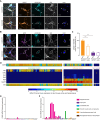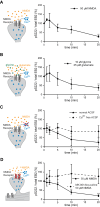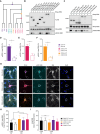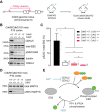Cell type-specific expression, regulation and compensation of CDKL5 activity in mouse brain
- PMID: 38326557
- PMCID: PMC11371643
- DOI: 10.1038/s41380-024-02434-7
Cell type-specific expression, regulation and compensation of CDKL5 activity in mouse brain
Abstract
CDKL5 is a brain-enriched serine/threonine kinase, associated with a profound developmental and epileptic encephalopathy called CDKL5 deficiency disorder (CDD). To design targeted therapies for CDD, it is essential to determine where CDKL5 is expressed and is active in the brain and test if compensatory mechanisms exist at cellular level. We generated conditional Cdkl5 knockout mice in excitatory neurons, inhibitory neurons and astrocytes. To assess CDKL5 activity, we utilized a phosphospecific antibody for phosphorylated EB2, a well-known substrate of CDKL5. We found that CDKL5 and EB2 pS222 were prominent in excitatory and inhibitory neurons but were not detected in astrocytes. We observed that approximately 15-20% of EB2 pS222 remained in Cdkl5 knockout brains and primary neurons. Surprisingly, the remaining phosphorylation was modulated by NMDA and PP1/PP2A in neuronal CDKL5 knockout cultures, indicating the presence of a compensating kinase. Using a screen of candidate kinases with highest homology to the CDKL5 kinase domain, we found that CDKL2 and ICK can phosphorylate EB2 S222 in HEK293T cells and in primary neurons. We then generated Cdkl5/Cdkl2 dual knockout mice to directly test if CDKL2 phosphorylates EB2 in vivo and found that CDKL2 phosphorylates CDKL5 substrates in the brain. This study is the first indication that CDKL2 could potentially replace CDKL5 functions in the brain, alluding to novel therapeutic possibilities.
© 2024. The Author(s).
Conflict of interest statement
Part of the findings were included in a patent application by the Francis Crick Institute.
Figures






References
MeSH terms
Substances
Supplementary concepts
Grants and funding
LinkOut - more resources
Full Text Sources
Other Literature Sources
Molecular Biology Databases
Research Materials

